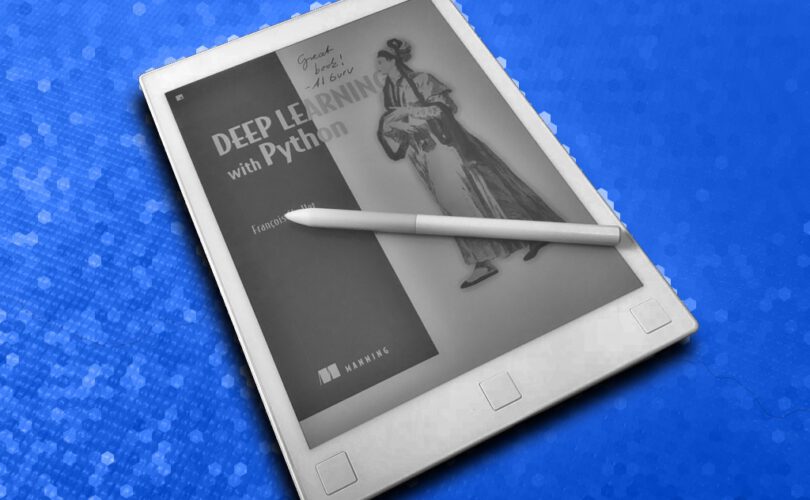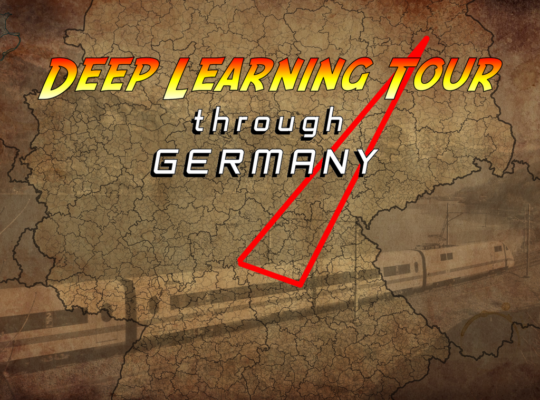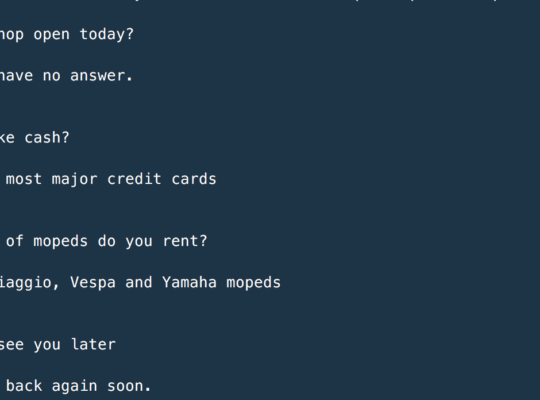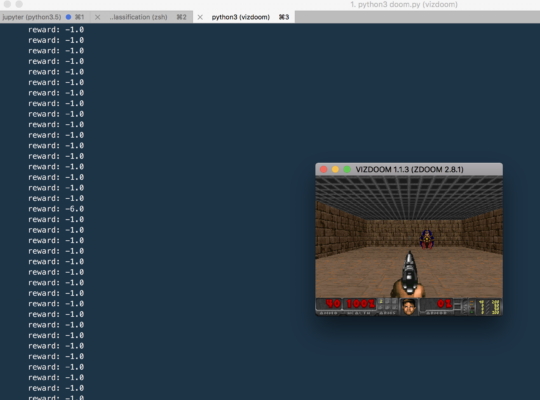Namaste. So, I guess that everyone has been enjoying this year’s Christmas festivities. I certainly did. For me it was about traveling and meeting friends and loved ones. Today, I want to talk a little bit about myself. And I want to talk a lot about a great book. Deep Learning with Python by Francois Chollet.
2017. Such a great year for Deep Learning. It does not cease to amaze me.
How to read a book…
I am such a bookworm… Ever since I can remember, I have been reading books on many matters. I got a lot of inspiration out of books. And I certainly believe, that this has been one of the main reasons for me to enter an academic career.
For me as a Deep-Learning-expert, reading books is calling model.fit() on my own brain. It is my opinion, that it is good to constantly entertain your mind with the thoughts and knowledge of others. Inspiration. Knowledge. Skills. And you know what? Bill Gates reads about one book per week. This might be one ingredient of his recipe for success.
For me, times changed when I got myself an Amazon Kindle. Almost all the knowledge of mankind inside my pocket. Great idea! And no backpacks full of paperbacks. I even once declared the e-reader the pinnacle of human inventions. Now I think differently. The e-writer is more like the real thing. I got myself a reMarkable paper tablet recently for all my reading and writing pleasures. And one of the first books I read on it, was Francois Chollet’s newest book on Keras.
Always read about Deep Learning and start with the Keras-book.
Keras is THE Deep Learning library. And Deep Learning with Python by Francois Chollet is THE book on Deep Learning. Bold statements. And I mean it.
Of course, everyone should know Ian Goodfellow’s book Deep Learning. This was my first book on the topic and I remember vividly reading it on a train to a customer. Goodfellow’s book is great. It is a really good read. Chollet’s book is greater. In my subjective universe of course. I love the new book because it is the most straight-to-the point and practical one that I know so far. And this is very important in our fast and modern times.
Straight to business. I love that attitude.
It is true. The book gets you started practically with Deep Learning in about 15 minutes. The last time I checked, the MNIST-implementation in Keras is less than 50 lines of code. Less than 50 lines of code for a Neural Network that has a high accuracy on the whole dataset! This is not something that you develop in one afternoon. This is something that you implement over a nice, decent cup of coffee. A small one.
And this is how the book works. Straight-to-business. Best-practices, good-to-knows, and hands-on tutorials, tutorials, tutorials. And none of the practical exercises fills a whole book. They are very easy to digest.
And hell, is the book complete. Classification. Regression. Image Processing. Natural Language Processing. Algorithms. Network architectures. Patterns. Data Augmentation. You name it. You learn it all like strokes of a brush.
You do not always need the whole math.
Again, it is true. Ian Goodfellow’s book provides you with the most solid mathematical background on Deep Learning that is possible. But Chollet slaughters a holy cow and he is right to do so. You do not always need an extensive mathematical background for doing great Deep Learning.
Today is the time for the Lego-building-blocks approach to Deep Learning. It is great that people implement Backpropagation and Recurrent Neural Networks in MATLAB. Really. I mean it. But for someone who has an idea and preferably a use-case for Deep Learning, this might not really be necessary.
Again, in Keras the MNIST-example has less than 50 lines of code. And the model architecture is around 6 lines. I have seen effective projects with around 300 lines of code. And I never really stumbled over really heavy maths. Building
blocks.

Of course, you need some mathematical knowledge. Or else you will always wonder why your a Softmax-dense-layer right in the middle of your model would not make sense… And this is the exact mathematical background that Francois Chollet provides. Not too deep. Not to shallow. Right in the middle.
What a great outlook: Deep Learning for creativity.
I read the book with lots of passion, entertainment, excitement and inspiration. And one of the latest chapters really touched me. It is about Deep Learning and creativity.
Of course, Artificial Intelligence goes into the direction of writing poems and generating music. But it is very likely that – especially in all creative fields – Artificial Intelligence will not really outperform human intelligence and creativity. There is no need for that. It will rather be the case that Artificial Intelligence is going to augment human creative endeavors. And I, being a very creative mind, really embrace that idea.
There was a hint at the end of the book that creative tools augmented by Deep Learning might be a good topic for another extensive book. I am looking forward to that!
Summing up.
If you want to know more about Deep Learning read Deep Learning with Python by Francois Chollet. I assume that you are eager to read about the topic at hand. You are on my blog, right? For me the book was a great read. And I am going to read it again. You should too.
Stay in touch.
I hope you liked the article. Why not stay in touch? You will find me at LinkedIn, XING and Facebook. Please add me if you like and feel free to like, comment and share my humble contributions to the world of AI. Thank you!
If you want to become a part of my mission of spreading Artificial Intelligence globally, feel free to become one of my Patrons. Become a Patron!
A quick about me. I am a computer scientist with a love for art, music and yoga. I am a Artificial Intelligence expert with a focus on Deep Learning. As a freelancer I offer training, mentoring and prototyping. If you are interested in working with me, let me know. My email-address is tristan@ai-guru.de - I am looking forward to talking to you!






